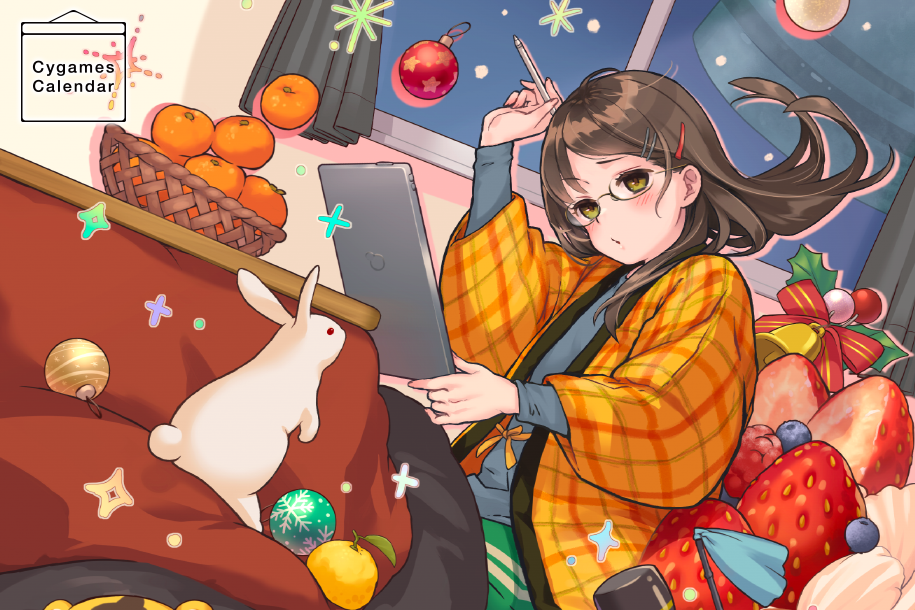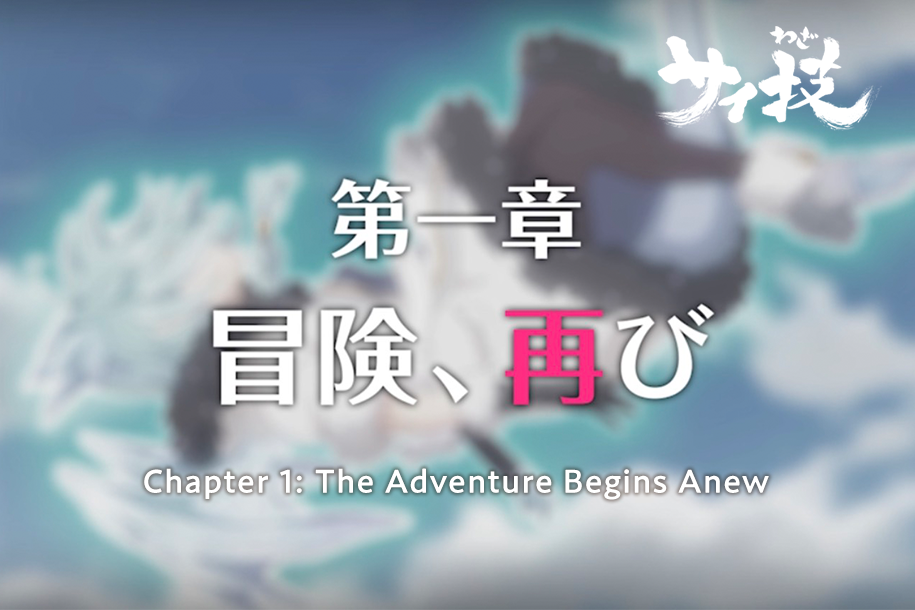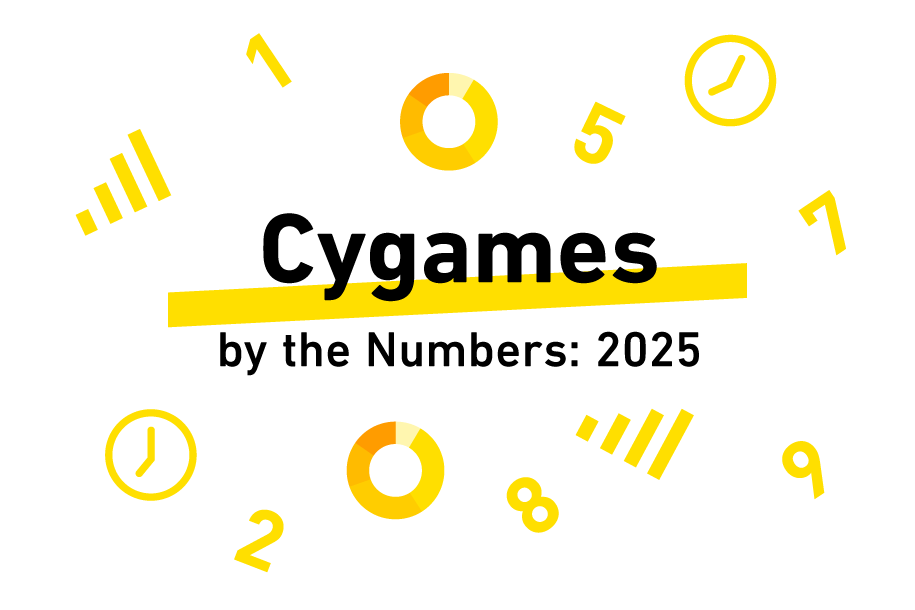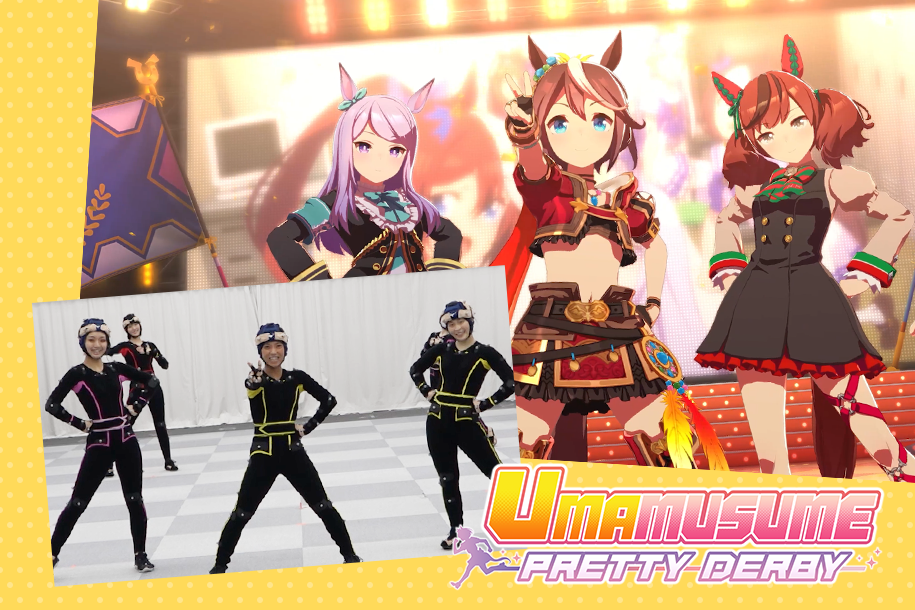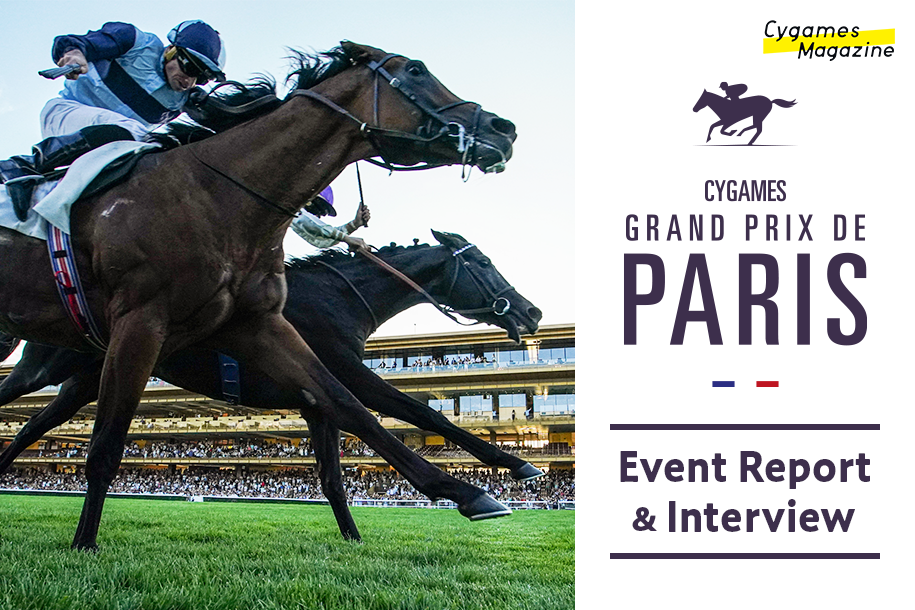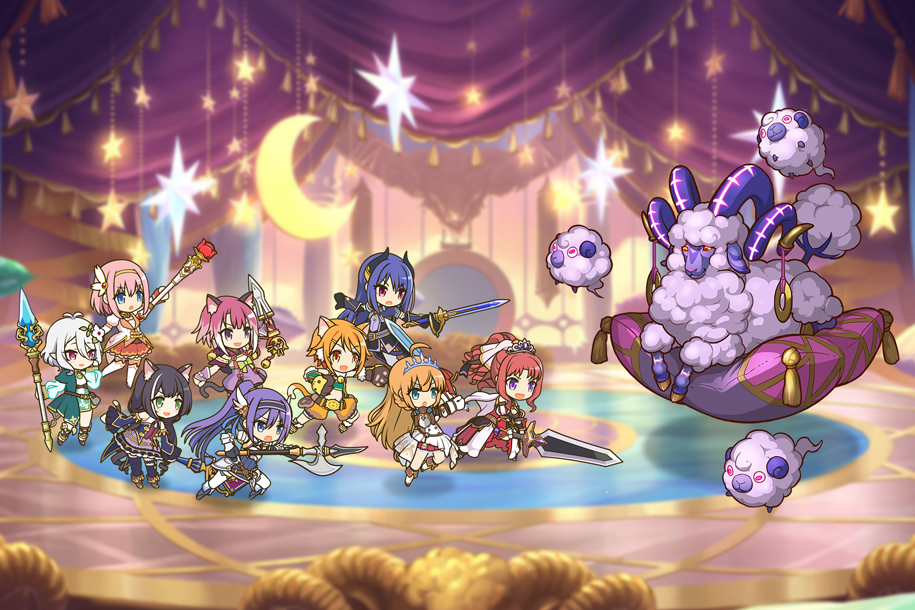The amount of images used per event has more than quintupled in four years?! Let’s step into the script team’s kitchen and take a look!
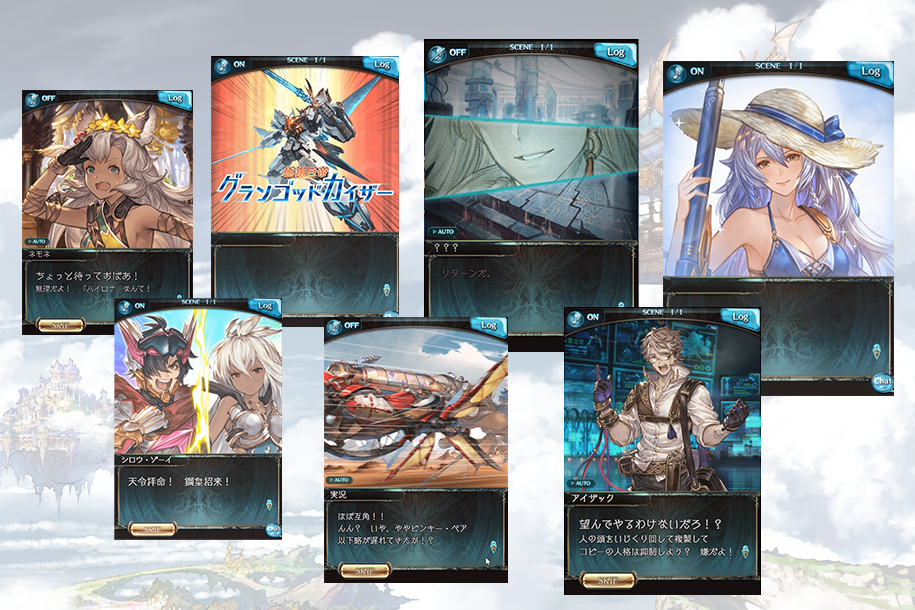
You need all sorts of ingredients to tell a story effectively. Unique characters, dialogue, pretty illustrations, and so forth. The script team is in charge of mixing all those ingredients together to create something brilliant. If the dialogue and illustrations are the meat and veggies of a story, then the script team are the master chefs who turn it all into a world-class meal!
More and more mobile games function as native apps* these days. This provides opportunities for more rich depictions and other features, but what did the transition from browser-only to mobile application mean for the way the storytelling in Granblue Fantasy (“Granblue”) evolved? Curious? We’re asking all the questions any fellow skyfarer would be eager to know! Keep reading for some behind-the-scenes info that’ll make you eager to dive into your Journal to take a peek at past events one more time!
*Apps that are installed directly onto a smartphone or tablet through an app store for that device.
- Granblue Fantasy: Planner, Script Team LeaderYoshitsugu

- An experienced game planner who joined Cygames in 2016. As the leader of the Granblue script team, he is in charge of producing and overseeing all the conversation-related scenes in the game.
- Granblue Fantasy: Planner, Script Team MemberAnan
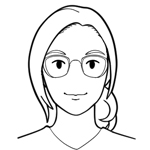
- Joined Cygames in 2018 after gaining experience in areas such as promotion and music video production at another game company. As a member of the Granblue script team, she works on in-game scenes, as well as a wide range of aspects outside of the game, including magazine ads and event history videos.
The script team goes to great lengths to convey the charm of each character in every scene!
I’ve heard about scripting languages, but never about a script team! What does a script team do exactly?
Yoshitsugu We primarily focus on creating the game’s dialogue scenes. But we’re also responsible for some things outside of the game itself. For example, we also produce magazine advertisements, the event history videos, and other Granblue materials. We’re always looking for ways to make this world and its characters more captivating. As the leader, I play a supervisory role, while Anan is in charge of actually producing the dialogue scenes.
Let’s get straight to the point. We all want to know how you put the scenes together!
Yoshitsugu When we’re working on a new scene, our first step is to think about what kinds of facial expressions and backgrounds would suit that scene. Then we pass on our requests for those new assets to the art team. Once we have the assets, we start putting them all together to create the scene.
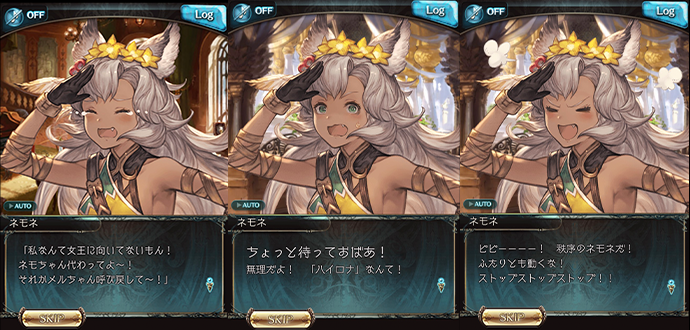
Yoshitsugu We also go over all the voice data we received for that scene and decide whether or not we need to request any kinds of additional editing, new sound effects, new animations, and so on. There’s other small jobs as well, like assigning which facial expressions go with what lines. We sometimes get suggestions from the scriptwriter in charge of the story, like, “Hey, wouldn’t it be interesting if they did something like this?” So we try to produce the scenes while keeping such suggestions in mind.
I supervise the work done by each team member, and then the scene is checked by the director before it goes out to all the players. As for story events as a whole, the event planners are also focused on developing the battles and UI.
I see! So first you need to request all the necessary materials for a dialogue scene, and then you work on putting together the final product. Does that mean that a single person gets to be in charge of one story from start to finish?
Yoshitsugu These days, we have quite a big workload, so for events we generally handle one chapter each. Back in the day, there were times when you would have a single person doing the entire event by themselves, from beginning to end. But I think the last time that happened was in September 2017, with Violet Violence.
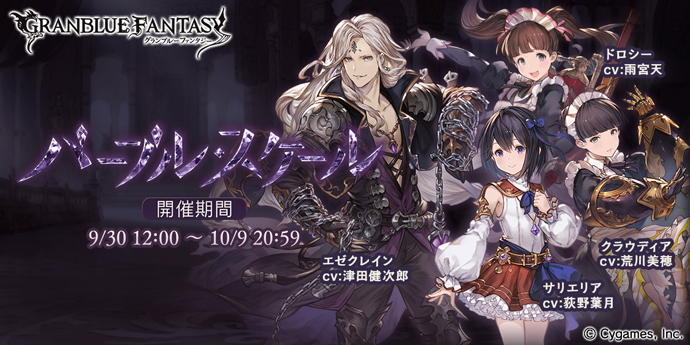
Platinum Sky was a turning point for the game in terms of quality, while Robomi: Epic Clash was one of the most epic challenges so far—no pun intended!
Which event really made your team push its work to the next level?
Yoshitsugu I think we gradually kept improving the events little by little, but the first big leap that stands out to me is Platinum Sky at the end of 2016. We really kicked it up a notch with that one. Then, from Eye of the Storm in January 2017 onwards, we started using a lot more images for each event… That meant plenty of extra work for us, but it was by no means a bad thing. It made the people in charge realize exactly what we could achieve with a browser game.
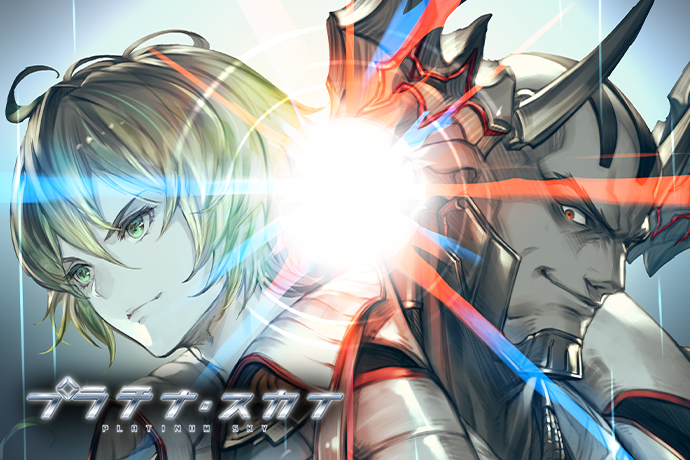
Platinum Sky has you racing around in a speedship! I did get the sense that you used far more images for that event than ever before. Could you give us an idea of just how many images were used?
Yoshitsugu Platinum Sky was the first event to exceed 100 images. I think it was over 500 images in total? The images added up quickly. For example, if you overtake someone during a race, that alone requires three different images. One image where you’re coming up on the other racer, one where you’re side by side, and the final image where you actually overtake them.

Yoshitsugu The title of the most image-heavy event goes to Robomi: Epic Clash – Super Robo Gigantes vs. Arbitrator Zooey (Robomi: Epic Clash), though. That event featured a lot of all-out fights. And that means a lot of images—about 800 in total. Battles are generally speaking a lot more work than simple conversations.

Do you ever have any “huh?” moments once everything comes together? To return to the cooking metaphor for a moment, you don’t always get to taste a burger till you finish cooking it. So when you finally get to take a bite, you’re like, “What happened here?!” Has anything like that ever occurred during production?
Yoshitsugu Well, it’s my job to make sure that something like that doesn’t happen. If we’re likening the finished product to a tasty meal, then the director is the head chef, while I’m the sous chef that’s running around and sampling every last dish before it gets served up. It’s usually fine, since the head chef/director in this scenario doesn’t actually taste the full-course meal until I give it my stamp of approval! Of course, there are times when the personality of whoever was in charge of that particular scene comes through a little.
A bit of personality can make a story more interesting, but I can imagine that you may worry it won’t mix in so well.
Anan Luckily we don’t usually have to worry about that. As long as something isn’t too far removed from the general tone of the game, whoever is in charge usually has a bit of freedom to add in their own touches.
For example, we’ve got some people on the team who really love robot anime, so they are very passionate about the Robomi series. On the other hand, I love romantic dramas, so I was excited to work on Good Night Till It Be Morrow. We’re all interested in different things, so someone might raise their hand and say they’re very interested in this one scene, or that they want to work with these characters, and that’s how we divvy up the work. That way, we’re naturally motivated to work on the scenes we’re assigned to, which leads to a final product filled with personality.
When everything is done, we like to look over the finished scenes together, and that can be very exciting. You get to look at the scenes you were in charge of, but also those the other members worked on. Inevitably you’ll be like, “Woah! That’s a great idea!” while watching some of them. It’s a good way to get everyone fired up for the next story.
Want to see how far the script team has come? Just take a look at the image editing over the years! A peek behind the scenes on how to make conversation scenes even more engaging!
We can’t forget about the animation when thinking about how the conversation scenes have evolved over time. It feels like there are far more animation patterns these days. How many would you say you have at your disposal?
Yoshitsugu We have about 50 general purpose animation patterns on hand these days.
When we were starting out, we tended towards just using static pictures. Even after we introduced animation, it was usually reserved for critical moments. But with Robomi we started using in conversation scenes the same animations seen in battle sequences. We then started to gradually expand the kinds of animations we have in our repertoire. Nowadays, we’ve got a lot more options. Take slashing animations for example. We’ve got vertical, horizontal, and diagonal slash animations, and different-sized slash animations, and so forth.
That sounds like quite a big development. Is there anything else that’s changed compared to the early days of Granblue?
Yoshitsugu You know when two characters are talking to one another in the same room? We now shift the background slightly so that it looks like they’re talking face to face.
You really pay attention to the fine details.
Anan We’ve also changed the way new outfits get introduced. Now we make sure the camera slowly pans over the entire outfit as it’s revealed.

Yoshitsugu We’ve also started editing the backgrounds whenever a character is running, so you get a real sense of speed. It’s little things like this that make the number of images we use increase year after year. Take L.E.T.S. H.A.N.G., an event from March 2016, for example. Back then, we only used about 60 images for an event, but these day the average is closer to 300.
Even so, L.E.T.S. H.A.N.G. had quite a lot of images for its time, right?
Yoshitsugu Yeah, since Lowain and the others were hanging around a table and telling each other stories in an omnibus format. I remember thinking we were using so many images back then.
The 7th anniversary event that smashed all the records! Easily beating even Robomi: Epic Clash!
The release of the 7th anniversary event, Home Sweet Moon, was spread across four different updates. How much work went into making it?
Yoshitsugu The first part was the biggest, at 500 images. All four parts combined added up to more than 1500 images in total. (laughs)
I’d say just the sheer amount of work we had to do was about 2.5 times more than we did for Robomi: Epic Clash. That meant our illustration team had to deliver more than twice the amount of images than they usually do. It was a monumental task.
Wow! You just told us how tough Robomi was and this one had nearly triple the workload?! But do you think all that extra effort led to a longer, richer story for players to enjoy?
Yoshitsugu You could say so, since the final event itself was 2.5 times longer than normal. It was released in four parts, so it didn’t feel as long if you kept up with every update, but if you read it all at once you’d really notice just the amount of story there. Even for Robomi: Epic Clash, people commented on its length.
Yeah, I remember Robomi: Epic Clash being pretty long. How long would you say it was compared to regular events?
Anan It was about 20% longer. Like we said before, it had a lot of fight scenes, so actually it was also more than 20% harder to make.
So Robomi was 20% harder and the 7th anniversary was 250% harder than Robomi? It’s like we’re calculating Might multipliers for weapon grids! Give my brain a second to catch up! Now, the sheer volume of work alone makes it clear that the 7th anniversary was a big job, but is there a part you can single out as the biggest challenge?
Yoshitsugu Probably the moon and outer space. When you’re working with objects on that sort of big scale, it becomes tricky to make sure they still have an impact on a tiny phone screen.
That’s understandable. You can’t exactly decide you want to go wide-screen now and say, “Hey! Flip your phone to horizontal mode for just a sec, please!” No matter how cool it’d be.
Yoshitsugu That’s right. (laughs) The setting is a huge change from our usual skydoms, so I really wanted to emphasize the vastness of space.
Robomi: Epic Clash also featured Ultra Robo Grand God Kaiser, the biggest character we ever had at that time. But when you put the two events next to one another, the Society storyline is not just more serious, but one of the most serious stories we’ve ever had in Granblue. So we really had to rack our brains to think of how we could portray it the right way.
You’re certainly right about the Society storyline being serious. How did you decide your approach toward depicting it?
Yoshitsugu We would read through information on the story that we received from the scenario team and brainstorm a little. For parts we were fuzzy about, we’d sketch or write some rough notes and send them back to the scriptwriters to see if it was what they had in mind, especially for the moon base. Then we’d pass on our final draft to the illustration team and they’d deliver something that exceeded all our wildest expectations.
The illustrations sound impressive! Could you give some examples?
Yoshitsugu Definitely the backgrounds. I was really amazed by the way they managed to portray a completely different aesthetic and culture compared to what we had done in other stories so far. The backgrounds inside the moon base in Second Advent and Spaghetti Syndrome were mostly a plain white, but for Home Sweet Moon they crafted something special that suited the story perfectly.
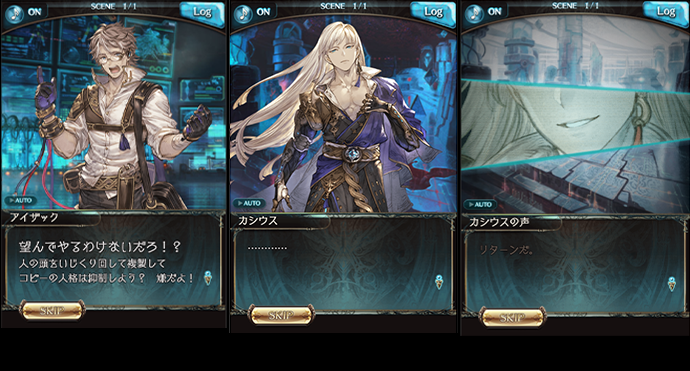
“We pulled out all the stops.”
Completing Home Sweet Moon
I was totally captivated by the way you produced Home Sweet Moon. It’s hard to sum up all the highlights, but I really loved that scene where Gwynne gets swept off her feet, and the fine details on Dex’s gun, and Eustace in the final act. Could you tell us how you went about making these scenes?
Yoshitsugu Gwynne’s leg sweep scene was entirely made from still images. The player doesn’t know it when they first see this scene, but Gwynne and Isaac are siblings. In fact, this scene is an adaptation of and improvement on the scene in Spaghetti Syndrome, where Isaac is knocked down by Cassius’s spear. We showcase the legs first and then show the person getting swept up and knocked over, and in Isaac’s case we were also sure to include the spear.
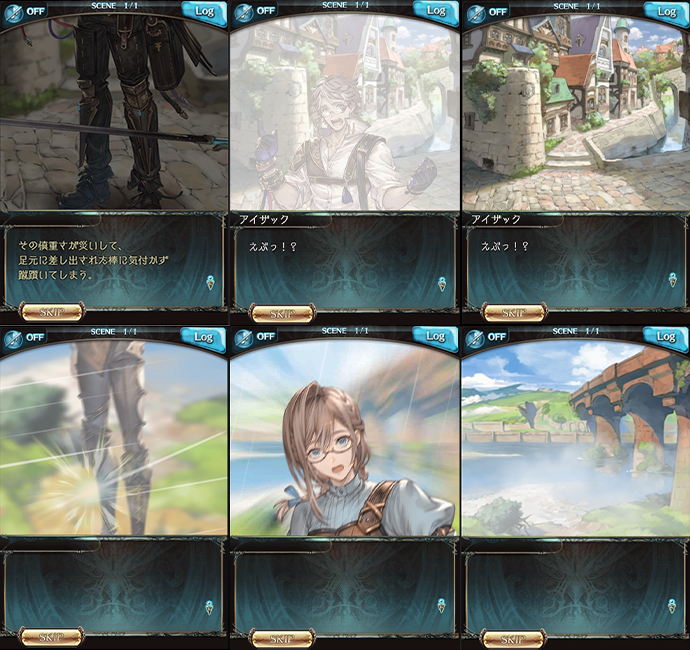
Who would’ve thought that the siblings would be connected by such a specific shared experience! That’s some real foreshadowing right there… So what about Dex’s gun?
Yoshitsugu I had a very specific image in mind for Dex’s gun. So I asked for something that looked like the railgun from a certain movie. The person in charge cut out the blue glowing parts from Dex’s battle illustration, applied some iridescent color, and then layered them in to create this soft glow effect. I was so impressed on seeing the final result.
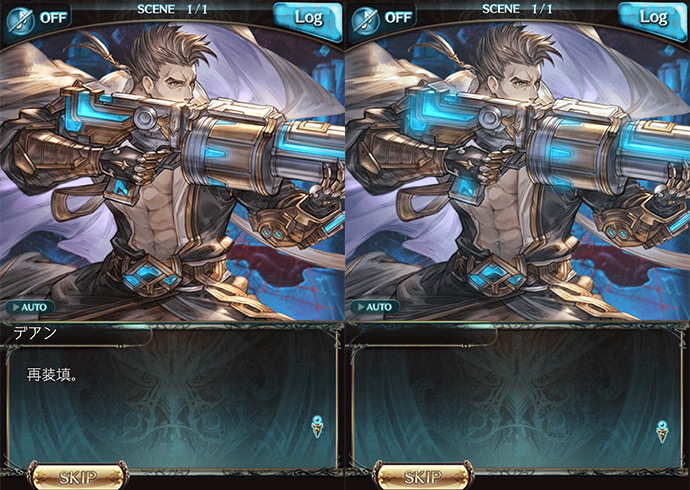
Could you tell us more about Eustace’s big scene in the second half of the story?
Anan I like Eustace, so I’ve been wanting to work with his character for a while. I think it’s the most enthusiastic I’ve ever been about a scene. I remember thinking, “I want to make Eustace fans all over the world cry!” The first time I read the script, I even knew immediately what background music I wanted to use.
Yoshitsugu I understand firsthand the incredible things you can achieve when you really love the character and want to share that love with everyone. Which reminds me: Anan, you also handled Cassius SSR’s story. You adore the guy so much that you finished scripting before we even received the different facial expression illustrations.
Anan Yeah, when it’s a character I love, it becomes really easy to put their scenes together. But then I finish up so quickly, I end up regretting not having more time to spend with the character. (laughs)
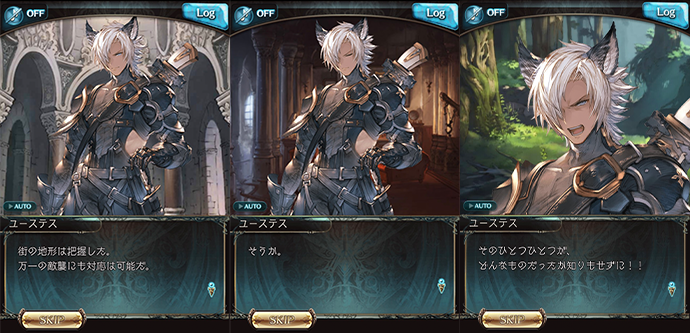
(laughs) I also had the impression that you guys really upped the ante with the background music and sound effects this time.
Yoshitsugu The climax music is included as a request from the director, but all other choices are left up to the script team. Our song selection has expanded dramatically over the years, and we try to select music in a way that doesn’t become too repetitive. The person in charge of the scene where the cosmoship enters space quite ingeniously kept that scene silent, so that when the sound starts playing you feel even more immersed in the scene.
Anan There was a mix of new characters like Gwynne and also oldies like Rhens who haven’t shown up in quite a while, so we were very particular about selecting background music that would suit each character’s personality.
Yoshitsugu The people in charge of the sound effects did a great job too. The sound effects for Diaspora were a particular highlight for me. We actually didn’t have any wooden sword sound effects prior to this event, so we had to ask someone to record the sounds of a wooden sword swinging, falling, etc. (laughs)
Looking back on Home Sweet Moon, how do you feel about it now?
Yoshitsugu We’ve got first-class writers and illustrators, so as members of the script team we had to make every effort possible to ensure the final product reflected that quality. If you have the best ingredients, you want to make the best dish. I think the script team really came together to make “Operation Home Sweet Moon” a success. I’d be happy if anybody was inspired to pay their Journal a visit and give the event another careful look through to spot all the details we put in there.

Yoshitsugu By the way, in the chapter “Processing… System Loaded, 3: All Memory Cleared” of the event, there’s this scene where Cassius gears up for his return to the sky. We discussed it with the writers, and we decided that he would wear his old outfit for that scene. Isaac is in such a frazzled state that he doesn’t even notice. It’s a bit of a blink-and-you’ll-miss-it sort of thing, but it really shows off our attention to detail, so please look for it if you revisit the event.
Granblue is heading into its 8th year. Do you have a final message for the fans?
Yoshitsugu The creative team gets a great sense of enjoyment out of making a game that the players will love, and I hope some of that playful passion is conveyed to our players. It’s not easy to make events like Home Sweet Moon, but we’ll continue to work hard to deliver the very best content without compromising. We hope you continue to enjoy the scenes we make for you.
That’s all for our behind-the-scenes look at the Granblue script team! Granblue Fantasy will continue to evolve as it celebrates its 7th anniversary, so please stay tuned!
Editor’s Notes
During the interview, we learned some interesting information about magazine ads, but we didn’t have the space to cover it this time. That’s why we wanted to briefly bring the topic up at the end.
When it comes to magazine ads, the team has to pick out images and text that’ll really leave an impression. Ideally, they want people to think, “Hey, this next event looks pretty interesting!” The story events in particular are advertised using a lot of fun and playful designs, so keep an eye out for them if you can!

★Read other articles related to Granblue Fantasy★




